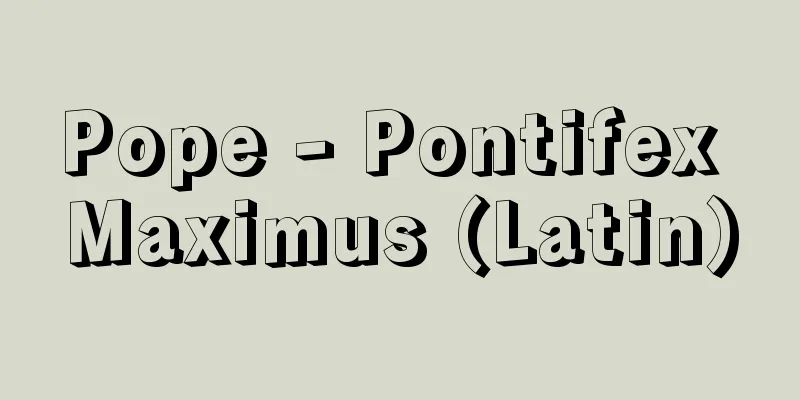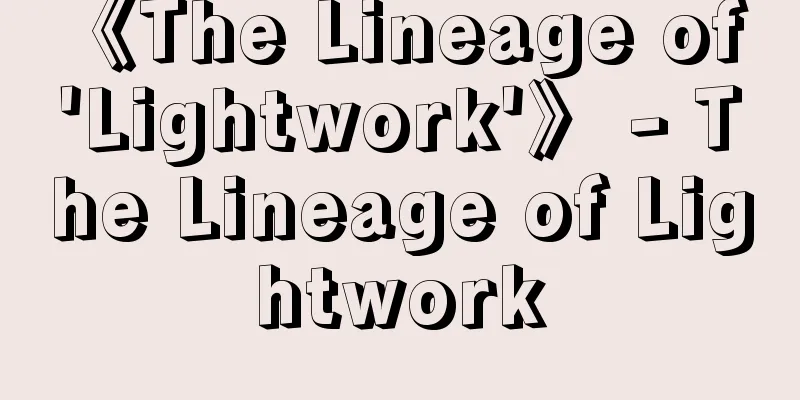Pope - Pontifex Maximus (Latin)

|
The head of the Roman Catholic Church and head of the Vatican City State. Also called the Pope. Among the various titles held by the Pope, four - "Bishop of Rome," "Vicar of Jesus Christ," "Successor of the Head of the Apostles," and "Head of the Catholic Church" - tell the origin and nature of the papacy. In other words, Christ, the founder of the church, gave the "head of the apostles," Peter (Petrus), the authority to lead the church after his death by making him his representative ("Vicar of Christ"). This authority was passed down to his "successors," the "Bishops of Rome," after Peter's martyrdom in Rome. Therefore, the Pope, who is the Bishop of Rome, is said to have held the position of "Head of the Catholic Church" throughout the history of the church. As the "Head of the Vatican City State," the Pope also holds the position of head of a country, and by taking a position that does not belong to any country, he ensures his spiritual independence. The origin of the Pope's primacy is supported by the Bible, which says, "You are Peter, and on this rock I will build my church.... And I will give you the keys of the kingdom of heaven..." (Matthew 16:18-19), as well as the passage in which Christ repeatedly commanded Peter to "Feed my sheep" (John 21:16-17). The election of the new pope is carried out in a conclave convened within 15 days of the death of the previous pope. Only cardinals have the right to vote, and once a person who receives more than two-thirds of the votes accepts the position, the name of the new pope is immediately decided and announced. The inauguration ceremony of the new pope is held on the Sunday or holiday immediately following the election. [Takashi Umezu August 21, 2017] historyIn fact, the primacy of the Pope was gradually recognized throughout the Church over the course of Church history, but as early as the 3rd century the Bishop of Rome was called the "Chair of Peter" (Cathedra Petri), and from the 4th century onwards only the Bishop of Rome was called "Papa." During the era of the Christian Roman Empire, the papacy was subject to strong interference from the imperial power, but the task of establishing doctrine while eliminating heresy was generally resolved under the initiative of the Pope, and through this the primacy of Rome came to be widely recognized. In the Middle Ages, while the Papacy became estranged from the Byzantine (Eastern Roman) side, it consolidated its foothold by tying up with the newly formed Frankish monarchy, and came to assume a position as a religious, cultural, and political leader. In particular, through the "Gregorian Reforms" of the 11th and 12th centuries, the Pope gained independence from secular power, established the Papacy as the central governing body of the Church, and increased his leadership over the entire Church. Furthermore, in the context of the coexistence and conflict of the feudal powers of the time, the Pope sometimes exerted a great influence on the political world. This was the period of the heyday of the medieval Papacy, represented by Pope Innocent III and others. In the late Middle Ages, the power of the papacy weakened relatively due to the growing strength of secular powers, such as the French monarchy. Furthermore, as a result of the Schism (1378-1417), trust in the primacy of the papacy wavered, and the doctrine of the primacy of the papacy, which placed the decisions of the councils as a whole above those of the pope, became stronger. Despite calls for "reform of the head and members of the church," the papacy was unable to achieve any results, and was initially unable to take effective measures against the Protestant Reformation that began with Luther. The Catholic side tried to recover lost ground, thanks to the efforts of the Council of Trent (1545-1563), which was held under the initiative of the pope, and especially the efforts of the Society of Jesus, who pledged loyalty to the pope, but they were unable to reunite Europe and the Christian world under the papacy. As Europe modernized, the Church was put on the defensive in the face of modern political systems and ideas, and the privileges that the Pope had traditionally held were denied. The First Vatican Council (1869-1870) in the second half of the 19th century clarified the Catholic Church's position against the trends of the times, and also declared the infallibility of the Pope, demonstrating a positive attitude toward the modern world. However, during the Council, Italy, which was aiming to complete national unification, occupied Rome and took away all of the Papal States. The Pope lost the secular power that he had traditionally held, and came into conflict with the Italian government (the so-called "Rome Question"). [Takashi Umezu August 21, 2017] The Modern World and the PopeHaving lost his secular power, the Pope, as the head of the Catholic Church, began to appeal to the world from the perspective of a religious leader about social justice and peace issues facing the world. In his 1891 encyclical "Rerum Nobarum," Pope Leo XIII strongly appealed for respect for the humanity of workers, and was also the first to preach the need for a League of Nations for world peace amid the fierce international conflicts of the imperial era. However, despite the Pope's wishes, the world plunged into two world wars. Meanwhile, in 1929, Pope Pius XI concluded the Lateran Treaty with the Italian government to resolve the "Rome problem," and as a result, the Vatican City State was established. The Pope became the head of a country called the Vatican City State, and secured his freedom and independence as the head of the Catholic Church. The second half of the 20th century was a major turning point for the Papacy. Pope John XXIII convened the Second Vatican Council (1962-1965) and tried to reinvent the Church through "modernization" (aggiornamento), while in his encyclical "Mater et Magistra" he called for overcoming the disparity in wealth, and in "Pacem in Terris" (Pace on Earth) he preached that international peace should be achieved not through a balance of power but through mutual trust through dialogue. Pope Paul VI's peace speech at the United Nations (1965) also followed this line. Pope John Paul II, who ascended to the papacy in 1978, traveled even more energetically around the world, visiting Japan in February 1981 for the first time as a pope, and calling for the realization of peace and justice throughout the world, including issuing a peace appeal in Hiroshima. In particular, the Pope, who was from Poland, visited his home country, which was under a socialist system, in 1979, appealed for religious freedom and overcoming the Cold War, and expressed his support for the Polish independent trade union Solidarity, which was established in 1980. This caused the socialist camp to become unstable and the Cold War structure to collapse. In 1989, the Polish Solidarity party came to power, the Berlin Wall came down, and a series of Eastern European revolutions occurred. In the same year, Gorbachev, who advocated perestroika (reform), visited the Vatican for the first time as General Secretary of the Communist Party of the Soviet Union and met with the Pope. Two years later, the Soviet Union collapsed. In January 1998, the Pope visited Cuba and met with Chairman of the Council of State Castro, and in March 2000, which was the Holy Year, he made a pilgrimage to the Holy Land with the aim of "forgiveness and reconciliation" between religions and ethnicities. In May 2001, he visited Greece for the first time since the Christian church split into East and West (1054). [Takashi Umezu August 21, 2017] "The Pope, by W. Dormesson, translated by Hashiguchi Rinsuke (1959, Don Bosco Press)" ▽ "Catholicism: The Pope and the Modern World, by K. V. Arlettin, translated by Sawada Akio (1973, Heibonsha)" ▽ "The History of the Roman Papacy, by Suzuki Nobuaki (1980, Kyoikusha)" ▽ "The New Catholic Encyclopedia, edited by the New Catholic Encyclopedia Editorial Committee of Sophia University, 4 volumes (1996-, Kenkyusha)" ▽ "Pope John Paul II and World Politics, by Ugo Colombo Sacco, translated by Yasuoka Takaaki (1998, Knights of Our Lady)" ▽ "The Pope, by Takeshita Setsuko (1998, Chikuma Shobo)" ▽ "The History of the Roman Papacy, by F. G. Maxwell Stewart, translated by Tsukimori Satoshi and Suganuma Hirono (1999, Sogensha)" ▽ "Encyclopedia of the Pope" by Matthew Bunson, translated by Keiko Nagasaki and Asako Nagasaki (2000, Sankosha) [References] | | | | | | | | | | | | | | | | | |©Shogakukan "> List of Popes (1) ©Shogakukan "> List of Popes (2) ©Shogakukan "> List of Popes (3) Source: Shogakukan Encyclopedia Nipponica About Encyclopedia Nipponica Information | Legend |
|
ローマ・カトリック教会の首長、バチカン市国元首。法王ともいう。教皇の帯びる諸種の称号のうち、「ローマ司教」「イエス・キリストの代理者」「使徒の頭(かしら)の後継者」「全カトリック教会の首長」の四つが、教皇権の起源と本質を物語る。すなわち、教会の創立者キリストは「使徒の頭」ペテロ(ペトルス)を自分の代理者(「キリストの代理者」)とすることにより、自らが世を去ったのち教会を導く権能を与え、この権能は、ペテロのローマでの殉教ののち、その「後継者」である「ローマ司教」に代々受け継がれた。したがって、ローマ司教である教皇は、教会の歴史を通じて「全カトリック教会の首長」の座にあったとされる。教皇はまた「バチカン市国元首」としては一国の元首の地位にあり、いずれの国家にも属さない立場をとることにより、精神的独立性を確保している。 教皇の首位権の起源の根拠としては、聖書の「あなたはペトルス(ペテロ)である。わたしはこの岩の上にわたしの教会を建てよう。……わたしはあなたに天国の鍵(かぎ)を与えよう……」との箇所(「マタイ伝福音(ふくいん)書」16章18~19)、およびキリストがペテロに「わたしの羊を牧せよ」と3回繰り返し命じた箇所(「ヨハネ伝福音書」21章16~17)があげられる。 教皇の選出は、前教皇没後15日以内に招集される選挙会(コンクラーベconclave)において行われる。選挙権は枢機卿(すうききょう)のみが有し、3分の2以上の多数票を得た人物が就任を受諾すると、ただちに新教皇名が決定、公示される。新教皇の着座式は選挙直後の日曜日または祝日に挙行される。 [梅津尚志 2017年8月21日] 歴史教皇の首位権は実際には教会史の流れのなかで徐々に全教会的に承認されるようになったのであるが、すでに3世紀にはローマ司教は「ペテロの座」Cathedra Petriと称されており、4世紀以降はローマ司教のみが「パパ」Papaとよばれるようになった。キリスト教ローマ帝国の時代には、教皇権が皇帝権の強い干渉を受ける面もみられたが、異端を排除しつつ教義を確立するという課題は、概して教皇側の主導権のもとに解決され、それを通じてローマの首位権が広く承認されるようになった。 中世になると、教皇権はビザンティン(東ローマ)側と疎遠になる一方で、新生フランク王権と結び付くことによって地歩を固め、宗教的、文化的、政治的指導者としての立場にたつようになった。とくに11~12世紀の「グレゴリウス改革」を通して、教皇は世俗権からの独立性を獲得するとともに、教会の中央統治機構としての教皇庁を整備し、全教会にわたる指導権を高めた。また、当時の封建的諸勢力の併存・対立の状況のなかで、場合によっては政治世界にも大きな影響力を及ぼした。そこに、インノケンティウス3世らに代表される中世教皇権の隆盛期が現出した。 中世末期に至ると、フランス王権を代表とする世俗権力の強大化によって教皇権は相対的に弱まり、さらにシスマ(教会大分裂、1378~1417)の結果、教皇首位権への信頼は揺らぎ、教皇よりも公会議全体の決定を上位に置く公会議首位説(公会議至上主義)が強まった。「教会の頭と肢体の改革」が叫ばれながらも、改革の実をあげられなかった教皇権は、ルターに始まる宗教改革に対しても当初は有効な措置を講ずることはできなかった。教皇の主導下に開かれたトリエント公会議(トレント公会議、1545~1563)による態勢の立て直し、また、とくに教皇に忠誠を誓うイエズス会の活躍などにより、カトリック側は失地回復に努めたが、ヨーロッパ・キリスト教世界を教皇のもとに再統合することはできなかった。 ヨーロッパの近代化が進むにしたがって、近代的政治体制、諸思想に直面して教会は守勢にたたされ、従来教皇が保持していた諸特権も否定されていった。19世紀後半の第一バチカン公会議(1869~1870)は、時代思潮に対してカトリック教会の立場を明確にし、また教皇の不可謬(ふかびゅう)性を宣言して、近代世界に対する積極的態度を示した。しかし、公会議中に、国家統一の完成を目ざすイタリアによりローマが占領され、教皇領のすべてを奪われた。教皇は伝統的に保持してきた世俗権力を失い、イタリア政府と対立した(いわゆる「ローマ問題」)。 [梅津尚志 2017年8月21日] 現代世界と教皇世俗権力を失ったなかで、教皇はカトリック教会の首長として、宗教的な指導者の立場から、世界が直面する社会正義や平和問題について広く世界に訴えるようになった。レオ13世は1891年の回勅「レールム・ノバールム」で労働者の人間性尊重を強く訴え、また、帝国主義時代の激しい国際対立のなかで世界平和のための国際連盟の必要性を世界に先駆けて説いた。しかし、教皇の願いもむなしく、世界は二度の世界大戦に突入した。その間、1929年にはピウス11世はイタリア政府とラテラノ条約(ラテラン協定)を締結して「ローマ問題」を解決し、その結果としてバチカン市国が成立した。教皇はバチカン市国という一国の元首となり、カトリック教会の首長としての自由と独立を確保することになった。 20世紀の後半、教皇権は大きな転機を迎えた。ヨハネス23世は第二バチカン公会議(1962~1965)を招集して、「現代化」(アジョルナメント)による教会の自己革新に努める一方、回勅「マーテル・エト・マジストラ」において富の不均衡の克服を訴え、また「パーチェム・イン・テリス」(地上に平和を)においては、力の均衡によってではなく、対話を通しての相互信頼によって国際平和を実現すべきことを説いた。パウルス6世(パウロ6世)の国際連合での平和の演説(1965)も、その路線を継ぐものであった。1978年に教皇座についたヨハネ・パウロ2世(ヨハネス・パウルス2世)はさらに精力的に世界各地を歴訪、1981年2月には教皇として史上初めて日本を訪れ、広島で平和アピールを発するなど、全世界に平和と正義の実現を呼びかけた。とくにポーランド出身の教皇が、社会主義体制の母国を1979年に訪問して信教の自由や冷戦の克服を訴え、さらに1980年に成立したポーランド自主管理労組「連帯」への支持を表明したことは、その後の社会主義陣営の動揺と冷戦構造の崩壊の契機となった。1989年にはポーランドの「連帯」が政権を獲得し、ベルリンの壁が崩壊し、一連の東欧革命が起こったが、同年、ペレストロイカ(改革)を掲げるゴルバチョフはソ連共産党書記長として初めてバチカンを訪問して教皇と会談した。その2年後にソ連は崩壊した。教皇は1998年1月にはキューバを訪問して国家評議会議長カストロと会談し、「聖年」にあたる2000年3月には諸宗教・諸民族間の「ゆるしと和解」を旨とする聖地巡礼を行った。2001年5月にはキリスト教会が東西に分裂(1054)して以来、初めてギリシアを訪問した。 [梅津尚志 2017年8月21日] 『W・ドルメッソン著、橋口倫介訳『教皇』(1959・ドン・ボスコ社)』▽『K・v・アーレティン著、沢田昭夫訳『カトリシズム 教皇と近代世界』(1973・平凡社)』▽『鈴木宣明著『ローマ教皇史』(1980・教育社)』▽『上智学院新カトリック大事典編纂委員会編『新カトリック大事典』全4巻(1996~ ・研究社)』▽『ウゴー・コロンボ・サッコ著、保岡孝顕訳『教皇ヨハネ・パウロ2世と世界政治』(1998・聖母の騎士社)』▽『竹下節子著『ローマ法王』(1998・筑摩書房)』▽『F・G・マックスウェル・スチュアート著、月森左知・菅沼裕乃訳『ローマ教皇歴代史』(1999・創元社)』▽『マシュー・バンソン著、長崎恵子・長崎麻子訳『ローマ教皇事典』(2000・三交社)』 [参照項目] | | | | | | | | | | | | | | | | | |©Shogakukan"> 歴代教皇表(1) ©Shogakukan"> 歴代教皇表(2) ©Shogakukan"> 歴代教皇表(3) 出典 小学館 日本大百科全書(ニッポニカ)日本大百科全書(ニッポニカ)について 情報 | 凡例 |
>>: Hyanggyo - Kyōkō (English spelling)
Recommend
Ouu - Ouu
Mutsu Mutsu Country and Dewa See you A country in...
Edogawa
A branch of the Tone River that flows through the...
ocelli
…An eye with a simple structure different from th...
The Rebellion of Wang Xiaobo and Li Shun
…In 995 (Zhidao 1), the leader of the time, Zhang...
Kamo-ryu
A school of calligraphy. Its founder was Fujiki Ka...
Ali Osman - Ali Osman
…1299-1922 (illustration). The official name was ...
Lettre du voyant (English spelling)
...The emergence of Rimbaud, who would later be c...
opinion paper
… [Commentary function] First, it presents social...
gravitational wave
…(1) gravitational wave The way a stationary dist...
Ibn Saud (English spelling) `Abd al-`Aziz ibn `Abd al-Rahman ibn Faisal al Sa`ūd
Born: Around 1880. Riyadh [Died] November 9, 1953....
Tetraspora gelatinosa (English spelling)
…[Mitsuo Chihara]. . . *Some of the terminology t...
Sorbus alnifolia (English spelling)
…[Yamanaka Futoshi]. … *Some of the terminology t...
Umi-daka
One of the early modern Irodaka. It was set as the...
Narushima Motonao
Year of death: Bunkyu 2.8.13 (1862.9.6) Year of bi...
Department of Outre-mer (English)
...However, in 1982, under the Mitterrand adminis...









